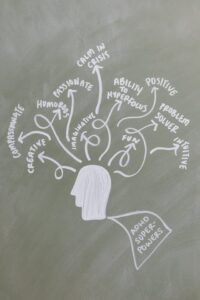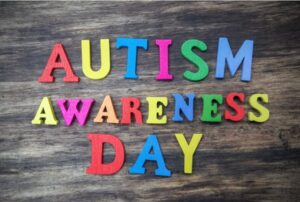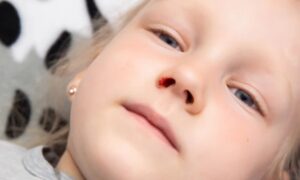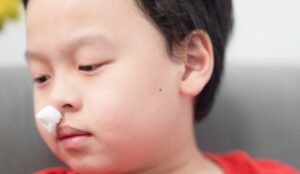Attention-Deficit/Hyperactivity Disorder (ADHD) is a common behavioral condition in children, often characterized by inattention, impulsivity, and hyperactivity. For many families, managing ADHD involves a multi-faceted approach, with behavior therapy being a core component. This article explores behavior therapy as an effective intervention for ADHD in children, delving into its techniques, benefits, and how it can positively impact a child's development.
Understanding ADHD and Behavior Therapy
ADHD affects approximately 6-9% of children globally, and its symptoms can interfere with school performance, social interactions, and family dynamics. Traditional treatments include medication, but the American Academy of Pediatrics (AAP) recommends behavior therapy as the first-line treatment for young children with ADHD (ages 4-6), either alone or alongside medication for older children. Behavior therapy involves specific techniques aimed at modifying challenging behaviors and helping children learn self-control and appropriate responses in various situations.
Behavior therapy for ADHD focuses on teaching parents and caregivers techniques to shape the child’s behavior. Unlike medication, which temporarily manages symptoms, behavior therapy empowers children with skills they can carry into adulthood, making it a sustainable approach for long-term development.
How Behavior Therapy Works in Managing ADHD
Behavior therapy uses a structured and evidence-based approach to address ADHD symptoms. The main techniques include:
- Positive Reinforcement: Encouraging desired behaviors by rewarding children for positive actions, such as completing tasks or following instructions.
- Setting Clear Expectations: Clearly defined rules and expectations help children understand appropriate behavior and what is expected of them.
- Consistent Consequences: Behavioral consequences (such as time-outs or loss of privileges) are applied consistently when a child demonstrates unwanted behavior, teaching accountability.
- Modeling Appropriate Behavior: Parents and caregivers act as role models, demonstrating calm and controlled behavior even in challenging situations.
- Skill-Building Exercises: Techniques to improve attention, organization, and self-control are taught gradually, building a child’s capacity to manage symptoms.
Each of these techniques can be customized to suit the child’s unique needs and integrated into their daily routines, creating a consistent structure that fosters improvement.
Techniques Used in ADHD Behavior Therapy
Effective ADHD behavior therapy combines specific techniques that focus on different aspects of behavior modification:
1. Parent-Child Interaction Therapy (PCIT)
PCIT is an interactive form of therapy that strengthens the parent-child relationship and promotes positive interactions. Parents are coached on how to communicate with their child effectively, using praise and structured feedback to guide behavior. This approach helps parents establish a positive rapport with their child, reinforcing desired behaviors through positive feedback.
2. Parent Training Programs
In parent training programs, parents learn specific strategies to manage ADHD symptoms. These programs cover setting limits, using rewards, and implementing discipline techniques in ways that encourage positive behavior. Parent training is essential in ADHD treatment because it equips parents with the tools they need to respond constructively to ADHD behaviors, reducing conflict and improving the child’s response to guidance.
3. Social Skills Training
Children with ADHD may struggle with social interactions, often interrupting others or finding it hard to wait their turn. Social skills training helps children understand social cues, communicate appropriately, and build relationships with peers. Role-playing exercises, guided practice, and feedback are common techniques used to teach social skills, helping children develop the confidence to interact positively in social settings.
4. Classroom-Based Behavior Interventions
ADHD behavior therapy also extends to the classroom, where children spend a significant part of their day. Teachers can use reward-based systems, visual aids, and structured routines to help ADHD students stay engaged. Classroom-based interventions ensure continuity, reinforcing behavior modification techniques outside the home.
Benefits of ADHD Behavior Therapy for Children
Behavior therapy offers numerous advantages over medication, especially for young children who may be sensitive to medication side effects. Here are some benefits that make behavior therapy a preferred choice:
- Long-Lasting Impact: Unlike medication, which only controls symptoms temporarily, behavior therapy equips children with skills they can use for life. It helps them understand and manage their emotions, behavior, and social interactions more effectively.
- Fewer Side Effects: Behavior therapy does not involve the physical side effects associated with stimulant medications often used to treat ADHD, such as sleep issues, appetite changes, and mood swings. This makes it a safer option, particularly for younger children.
- Empowers Parents: Parent training programs empower parents to support their child’s development, fostering a positive environment and reducing parental stress. When parents feel confident in managing their child’s ADHD, it improves family dynamics and strengthens relationships.
- Improves Social Skills: Many children with ADHD struggle with social skills, and behavior therapy helps them learn how to interact appropriately with peers, making it easier to form friendships and engage in group activities.
- Enhances Academic Performance: Through improved focus, self-control, and discipline, behavior therapy can lead to better academic performance. Children learn how to stay on task, manage distractions, and complete assignments more effectively.
- Builds Confidence and Independence: When children see positive results from behavior therapy, it boosts their confidence and sense of independence. They gain the skills to manage their emotions and actions, making them feel more in control of their lives.
Implementing Behavior Therapy at Home
Consistency is key when it comes to behavior therapy, so parents can apply these strategies in their daily routines. Here are some simple ways parents can reinforce behavior therapy at home:
- Create a Reward System: Reward systems are highly effective. Parents can use sticker charts, tokens, or points to reward children for completing tasks, following rules, or demonstrating good behavior. When the child accumulates enough points, they can earn a special reward, such as extra playtime or a small treat.
- Break Down Tasks: For children with ADHD, large tasks can feel overwhelming. Breaking down tasks into small, manageable steps can help children stay focused and accomplish each step gradually.
- Establish Routines: A consistent daily routine helps children know what to expect and provides structure, which is particularly beneficial for children with ADHD. For instance, having a set time for homework, chores, and bedtime can reduce stress and improve compliance.
- Practice Calm and Controlled Responses: Children often mimic parental reactions. Staying calm when the child displays challenging behavior models self-control and shows them appropriate ways to handle frustration.
Collaborating with Teachers for Consistent Support
Behavior therapy works best when it’s consistently reinforced across settings, so collaborating with teachers is beneficial. Teachers can provide feedback on the child’s behavior, noting areas of improvement and challenges observed in the classroom. Creating a consistent approach with the same behavior therapy techniques at school and home gives children the structure they need to improve their behavior and social skills effectively.
Seeking Professional Help
While parents can apply basic behavior therapy strategies at home, it’s often helpful to work with a licensed therapist or counselor specializing in ADHD. These professionals can tailor techniques to the child’s specific needs, providing guidance and support as parents implement these strategies. For older children and teens, individual therapy can also help them become more self-aware, fostering responsibility and encouraging them to take ownership of managing their ADHD symptoms.
Conclusion
ADHD behavior therapy is a valuable, effective approach to managing ADHD symptoms in children, with lasting benefits that empower both parents and children. Through positive reinforcement, structured routines, and collaboration with educators, behavior therapy promotes positive behavior and builds critical life skills. As a safe, sustainable alternative to medication, behavior therapy helps children with ADHD achieve their full potential by equipping them with the tools they need to thrive in school, social settings, and beyond.













